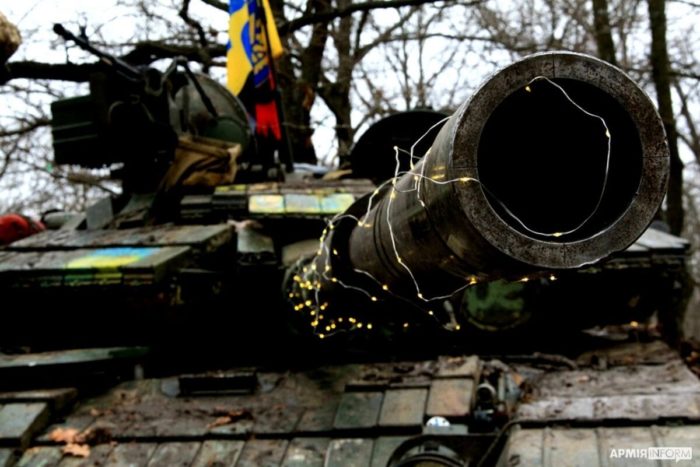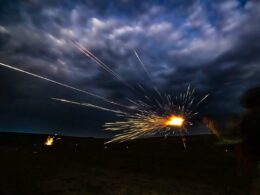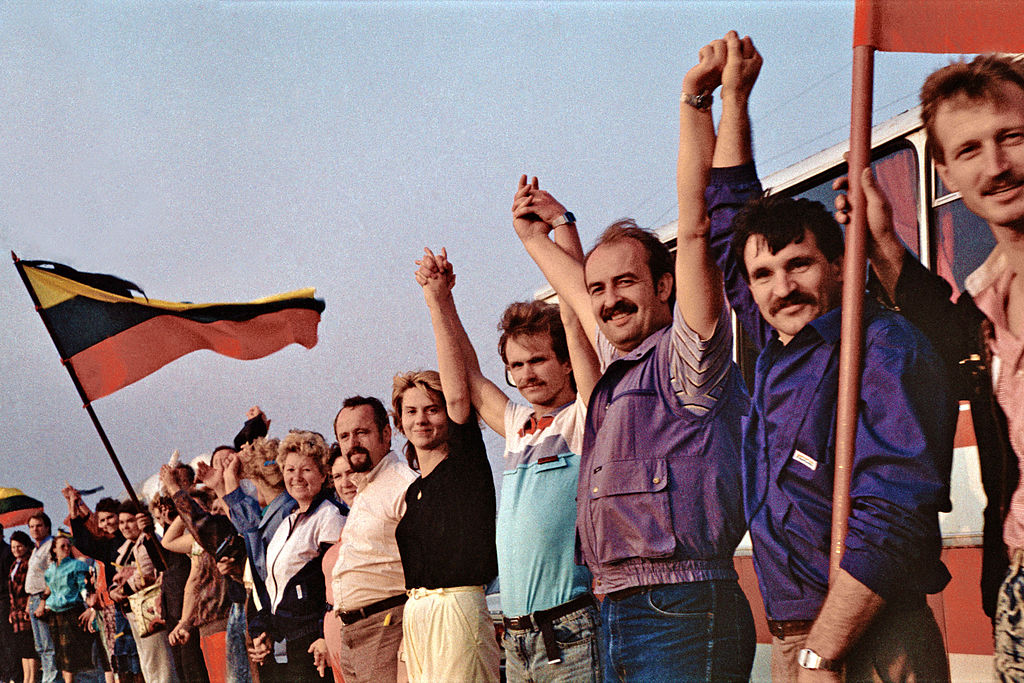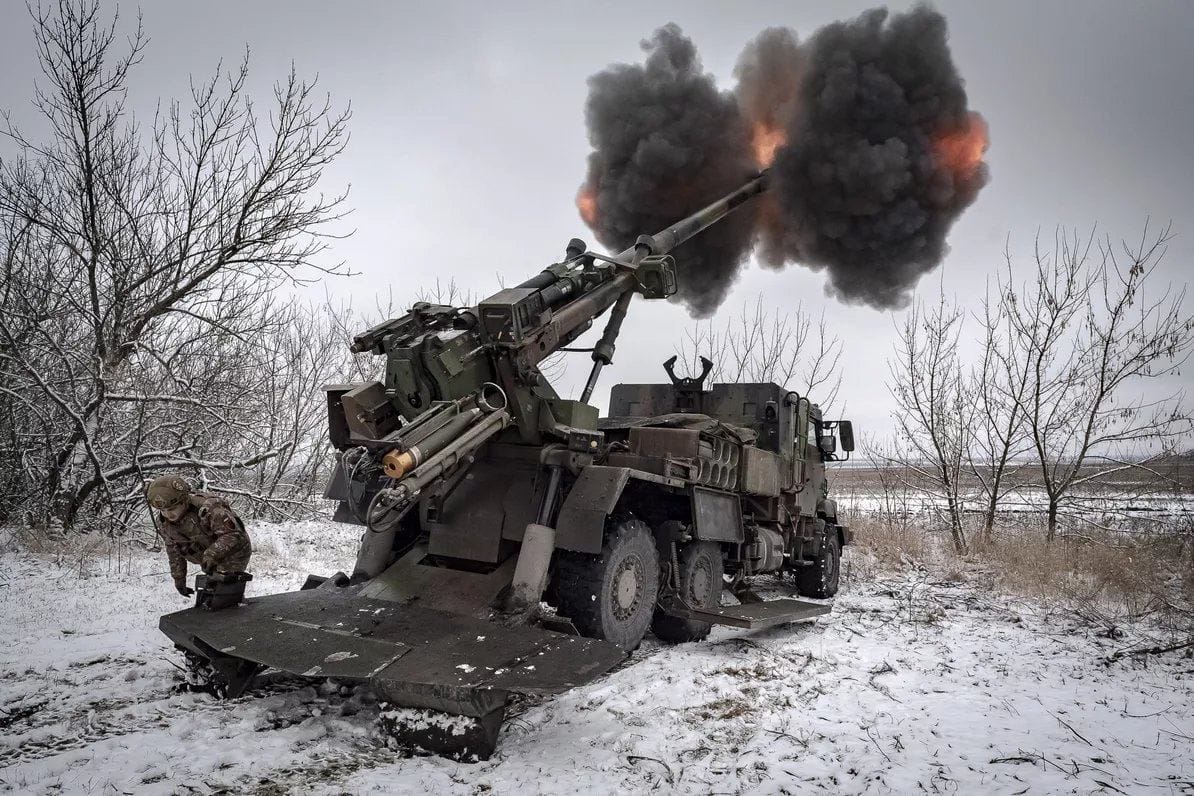Looking back to the year that has passed, it is hard to imagine 2023 being worse. The hope for a better tomorrow is in a sense the default value as 1 January dawns upon us.
While it is not given, I remain convinced 2023 will be a far better year by far.
It is not given because the war has been escalating since 2014.
Peace turned into a low-intensity conflict and a full-scale invasion and war. The war continued to escalate throughout 2022 and we have not yet seen the Western leadership and the strategic decision needed to break a long-term, vicious trend.
The US, NATO, and EU have failed to define the “red lines” Russia cannot cross. They have so far failed to respond to the Russian continuous escalation of the war, that being the energy war against Europe, its increased efforts to eradicate Ukrainian nationhood, its war on global food security or its destruction of the Ukrainian energy sector.
They have also failed to publicly support the Ukrainian declared end-state (or define one themselves) or clarify what “support as long as it takes” means in practical terms.
Recent escalations have already proven that Putin has chosen escalation and protracted war over diplomacy.
He still believes the West to be weak and unable or unwilling to do what it takes to ensure a Russian defeat. While his strategic messaging says otherwise, he believes victory is within his reach if Russia is only facing Ukraine on the battlefield, the maritime blockade remains unchallenged, and he is free to escalate without consequences. And not least, if the West talks about negotiations.
The war can, therefore, theoretically continue to escalate. But it will not.
Tectonic shifts in western policy regarding Russia
We are seeing trends and processes that might cause a tectonic shift in Western foreign and security policy, including its support of Ukraine.
The war needs to end, and it will not come to an end without external intervention.
Having made the strategic blunder of launching a full-scale invasion the war has turned into a now-or-never moment for Russia. Either it is victorious, or Ukraine is forever lost. Without Ukraine, its ambition of global power will be dead. Russia will only be a huge territory with a dwindling population destined for disintegration sometime down the road.
For Ukraine, it is all about its right to exist. If it stops fighting, it will stop existing. If it accepts to compromise on its territorial integrity, it knows it has only delayed Russia’s next war.
Stopping Western defence support to Ukraine will not end the war.
- Firstly, because of the Ukrainian spirit, resilience, and bravery. While the Ukrainian state might eventually stumble and fall, the Ukrainian nation will never be broken. Ukraine will never run out of courage and will never give up.
- Secondly, because giving up on Ukraine will only embolden Russia to continue what was always a broader confrontation with the West. We cannot afford to let it win because we will pay a much higher price later.
A “compromise” will not end the war.
Rewarding aggression will only encourage future transgressions. It will undermine the very security architecture our common security, stability and prosperity are based upon.
Additionally, if Russia is allowed to maintain the territories it is presently occupying, Ukraine is already defeated. This will not only lay the foundation for the next Russian war but also ensure that Ukraine remains financially inviable. It will be unable to import and export in the volume needed. It will have lost access to gas, oil, coal and minerals representing its future prosperity.
The war will only end when Russia realizes that a continuation puts its very existence at risk.
That happens first when the military balance in theatre is fundamentally changed in favor of Ukraine, putting Russia’s conventional military forces at risk.
European defense finally grows up
What needs to change for this to happen?
Many of the preconditions for the shift in policy are already taking place. The field of defense and security policy is undergoing a fundamental “maturing process”.
Until 24 February, a full-scale war in Europe was inconceivable for many.
After decades of “peace in our time”, governments, ministries, agencies and armed forces alike had lost the experience, knowledge and even the vocabulary needed to conduct grown-up discussions about security risks, war, crisis management, total defense, deterrence, readiness, sustainability and more.
All of that changed in 2022, leaving less room for the naïve and ignorant.
The increased “maturity” in both deliberations, debates and decisions is a direct consequence of the realities of war. The Russian atrocities, crimes against humanity and attempt to eradicate the Ukrainian nation has served as a wake-up call.
The unthinkable is happening in front of our eyes and can no longer be ignored by the media or governments.
Equally important, the West has gradually come to acknowledge being a part of a broader confrontation. Ukrainian efforts are being increasingly recognized as being aligned with European values, principles and not least, interests. In the words of the Swedish Defense Minister:
“I would like to sincerely thank the Armed Forces, who fight not only for the freedom and independence of Ukraine, not only for the territorial integrity of Ukraine but also, of course, for the whole of Europe.”
Weapons Ukraine needs are finally being delivered
Except for the Multi-National Joint Commission countries, most Western countries ignored the opportunity to acquire crucial Ukrainian lessons learned during the first eight years of the war.
In 2022, however, Europe has identified several lessons from the war that have helped improve their understanding of Russian doctrine, tactics and capabilities. The West has slowly come to understand the military logic behind Ukraine’s calls for more advanced arms.
It denied Ukraine arms for eight years, only to start delivering arms weeks before the Russian assault.
While Javelins
were the first lethal aid to be delivered in the spring of 2018, it was first delivered en mass along with Stinger in February, followed by:
- Starstreak in March
- M777 Howitzers in April
- Brimstone and Harpoons in May
- HIMARS and M270s in June
- HARM in July
- IRIS-T in October
- NASAMS in November
- and lately, a pledge for Patriot in December.
Javelins are good, but it is artillery strikes that coined Ukraine’s military success
All of these were a result of military considerations, high-level diplomatic efforts, and due political process.
With growing strategic maturity, the US and its European partners have increasingly found themselves turning a refusal into an acceptance.
Ukrainian bravery, professionalism, ingenuity and not least, its ability to put modern western weapons to good use against Russian forces have helped convince its international partners that their weapon systems better serve their national interests employed in the defense of Ukraine than in storage at home.
International partners who initially believed Ukraine would be defeated within days – and, therefore, were holding back defense support – have been awed.
Ukraine has adapted to new and high-tech weapons in stride. It has developed new and highly effective tactics for weapons they had previously not operated helping it liberate occupied territories and inflict massive casualties on the Russian Armed Forces. Equally important, Ukraine has developed new weapon systems enabling strikes deep inside Russia.
Ukraine has hit Russia hard
During the last 310 days, Ukraine has inflicted several stunning operational and strategic surprises on Russia.
These include:
- The destruction of a Russian landing ship and damaging of two other vessels in the occupied Ukrainian port city of Berdiansk on 24 March;
- The sinking of the Russian flagship Moskva on 14 April;
- Its attack on Saky airbase on 9 August;
- Its partial destruction of the Kerch bridge on 8 October;
- The combined UAV and surface drone attack on the Black Sea Fleet in Sevastopol on 29 October;
- Its attacks on Dyagilyaevo and Engels airfields deep inside Russia on 5 December (and twice since).
Three things Ukrainian drone strikes on Russian strategic airbases change in the war
The Ukrainian counteroffensive in Kharkiv starting on 6 September 2022 was, however, probably the biggest and most important so far.
Russia's forces were routed and left behind hundreds of weapons and vehicles. An army already suffering from poor leadership, low morale, psychological state, faltering motivation and desertion, was inflicted a huge blow to their collective psyche.
Russia's "red lines" have already been crossed
Ukraine has repeatedly crossed Russian “red lines” without repercussions, helping embolden its Western partners previously afraid of a Russian escalation of the war into a broader confrontation.
It has helped them both make new weapon systems available to Ukraine as well as test the Russian resolve.
The war has exposed flaws in strategic planning across NATO:
- The Alliance never planned or prepared for a full-scale war in Europe;
- All member states have come to realize that they lack the force structure, stockpiles, and industrial base to sustain a protracted war;
- The US and European defense industries have been incapable of meeting the new and urgent demands in short term;
- Reserves of many key weapons and ammunitions are near exhaustion and lead times for new deliveries stretch for months and, in some cases, years.
Crucially, the challenges have been acknowledged and are being addressed.
Eastern Europe: a new center of gravity
Additionally, a new center of gravity is emerging in Europe. The emerging European economies are in the east. The countries that still remember occupation and oppression all too well, have demonstrated leadership and resolve in the face of war. As Andrew A. Michta writes in Politico,
“The once-nebulous concept of Eastern Europe as a backwater of the West — an image reinforced by the Balkan wars of the 1990s — has been all but dismantled. Eastern Europe is now fully European, its history and heritage newly discovered in American universities and think tanks each day, with images of Riga, Warsaw and Kyiv populating our screens.
We see politicians from Eastern Europe showing leadership and courage at a moment of need, clearly articulating their national security imperatives and priorities, putting skin in the game, and taking real risks to stop Russia and aid Ukraine in its fight for freedom and national sovereignty."
These politicians have voiced concern over German and French policy towards Russia and have been proven right at every turn. The former leading countries in Europe have failed to lead, invest in security, rearm, and close critical vulnerabilities. Most crucially, they have failed to understand Russia.
To remain relevant, their foreign and security policy will need to be adjusted to the realities in the east. Germany has already signalled a new approach to European security, more aligned with Eastern Europe.
Germany’s Steinmeier announces new era of Russia relations in historic speech
European energy policy has undergone a huge transformation fundamentally changing the relationship between Russia and Europe. Cutting its dependency on Russian fossil fuel means that a critical vulnerability is being closed, reducing Russia’s ability to blackmail Europe. Equally important, the tectonic shift, once completed, will have a lasting effect on the Russian economy and its future ability to wage war.
More importantly, a new center of gravity in Europe might help NATO reinvent itself.
In 2022, we saw the Alliance commit to doing less. One year after the EU acknowledged that its member states (most of which also are members of NATO) are exposed to a Russian Hybrid War, and half a year after having received the Russian ultimatums, a divided Alliance only managed to agree on the rather feeble assessment of the Euro-Atlantic area not being at peace.
Official statements, the division of labor between NATO and its member states, the difference in strategic understanding between Eastern and Western Europe, and not least, the huge difference in practical support rendered by the individual member state demonstrates discord within the Alliance. NATO ambitions have been – and still are - defined by its “weakest links.”
“Why don’t we just give Ukraine everything there is to give?” Well, for two reasons. One, there’s an entire Alliance that is critical to stay with Ukraine. And the idea that we would give Ukraine material that is fundamentally different than is already going there would have a prospect of breaking up NATO and breaking up the European Union and the rest of the world. […] They’re not looking to go to war with Russia. They’re not looking for a third World War.” (President Biden, 21 December 2022
)
Biden explains why Ukraine not given weapons to swiftly defeat Russia
All of that will change as the “old NATO” (west) is aligning itself with the “new NATO” (east). Eastern Europe is rearming and investing in hard security. To stay relevant, and acknowledging the threat to European security, the other member states will be forced to follow their lead.
Why Ukraine will win the war against Russia in 2023
When I am optimistic for 2023, it’s because of the many processes that have started and that can no longer be reversed:
Russia is seen for what it is
- All hope for reset and business as normal has been quashed by its crime against humanity;
- Fear is giving way to resolve;
- The immature is maturing;
- Vulnerabilities are being closed;
- Production lines are being set up;
- The irresponsible are slowly turning responsible for the lack of other alternatives;
- The ones absent a moral compass are slowly finding their bearings because Russia's atrocities leave them no choice.
Consequently, previous “nays” are inevitably being turned into “ayes.”
Military intervention in Ukraine is becoming increasingly likely in 2023. More countries will come to realize that it’s in their national interest to end the war on Ukrainian terms. It will also offer Russia a face-saving off-ramp while restoring NATO deterrence.
But before that happens, we will most likely see the delivery of long-range fire and advanced, high-tech western systems. I believe Ukraine will receive more HIMARS, NASAMS and Patriot, as well as ATACMS, F-16, American M-60 and M-1 Abrams or the German Leopard-1 and Leopard-2, and M2 Bradleys and Marders.
Why a humanitarian intervention in Ukraine is in NATO’s interest
Drones have had a huge impact on the conduct of warfighting in all three dimensions throughout 2022. They have not only been used for identification, surveillance, reconnaissance, and attack but also to strike the enemy in the deep, saturate defense, and gain strategic surprises. They will continue to revolutionize warfare in the year to come. Crucially, Ukraine will be leading that process.
The delivery of high-tech western-made weapons and the ongoing development of drone warfare will fundamentally change the situation on the ground. It will help Ukraine unlock the full potential of maneuver warfare and reduce its dependency on massive artillery fire.
While there is a consensus that Ukraine has the initiative, the war is presently entering a stalemate. Despite Russian mobilization, the fundamental flaws within its armed forces will take years to fix. Due to sanctions, Russia is running out of precision-guided ammunition. 10 months of warfare have destroyed many of its elite units, killed off a greater part of its lower-level officer corps and destroyed much of its newest tanks and armored vehicles.
It has, however, been able to lay minefields, man and build heavily fortified defensive positions along the frontline supported by artillery.
Russian forces do not need to occupy more territory to be victorious. It has already destroyed the financial basis for Ukrainian statehood. It, therefore, only needs to secure the areas it already has taken.
Ukraine, in contrast, needs to liberate all territories presently occupied to avoid defeat.
While winter will favor Ukraine and allow it to maneuver, it will be facing a daunting challenge.
Lacking the USAF, its C4ISR, its main battle tanks and its infantry fighting vehicles, Ukraine is still unable to fight as the Americans. Ukraine is still fighting an enemy with 3-dimensional capabilities from one dimension.
The military balance is still in favor of Russia.
Artillery is, therefore, still crucial to its ability to break through the heavily fortified frontline. Only a quarter of the artillery it has lost, however, has been replaced. The inflow of ammunition might be insufficient to support a major counter-offensive.
Moving across open terrain against fortified and mined defensive positions (without combined arms and sufficient artillery) entails the risks of massive Ukrainian casualties, opening for a Russian counteroffensive. It has after all been reinforcing the frontline with both elite forces (withdrawn from Kherson) and better-prepared mobilized personnel.
The trends and process described above will, however, fundamentally change the military balance in favor of Ukraine. It will enable the Ukrainian Armed Forces to fight more efficiently than the Americans and evict Russian forces.
2023 is, therefore, a year of hope and victory.
Related:
- Ukraine needs long-range missiles to really win the war, country’s top generals say
- Better than Moskva: four things to know about Ukraine’s drone attack on Russian Fleet in Sevastopol
- Researcher: Ukraine will build its own long-range missiles. If the West allows.
- Ukraine’s counteroffensive near Kharkiv: what enabled the Balakliia blitzkrieg
- Three things Ukrainian drone strikes on Russian strategic airbases change in the war
- Germany’s Steinmeier announces new era of Russia relations in historic speech
- Why a humanitarian intervention in Ukraine is in NATO’s interest
- The world will not fall apart if Russia does – Ukraine’s foreign minister





